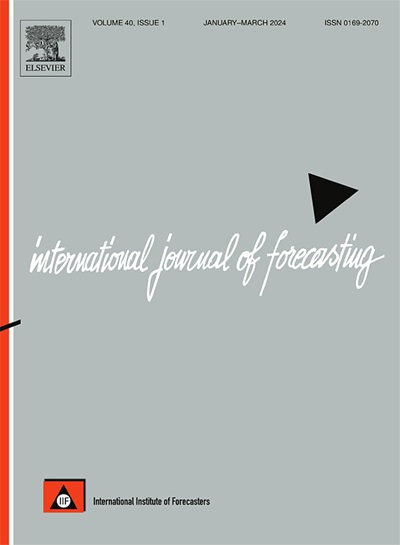论预报稳定性
IF 7.1
2区 经济学
Q1 ECONOMICS
引用次数: 0
摘要
预测通常在业务上下文中定期生成,以做出下游决策。在这里,预测不仅要尽可能准确,而且不能随意改变,在某种意义上要稳定。在本文中,我们探讨了两种类型的预测稳定性,我们称之为垂直稳定性(对于同一目标的不同来源的预测)和水平稳定性(对于来自同一来源的不同目标的预测)。现有文献中的工作只适用于某些基本模型,并且只能垂直稳定预测。我们提出了一种简单的基于线性插值的方法来稳定任何基本模型提供的预测,包括垂直和水平。我们的方法在稳定性和准确性之间做出了明确的权衡,在这种权衡的范围内的任何一点产生预测。我们使用N-BEATS、pooled regression、LightGBM、ETS和ARIMA作为基础模型,在四个公开可用的数据集上对不同的误差和稳定性进行评估。在一些数据集上,提出的框架实现了比基本预测更准确和更稳定的预测。在其他方面,我们的预测准确度略低,但稳定得多。本文章由计算机程序翻译,如有差异,请以英文原文为准。
On forecast stability
Forecasts are typically produced in a business context on a regular basis to make downstream decisions. Here, forecasts should not only be as accurate as possible, but also should not change arbitrarily, and be stable in some sense. In this paper, we explore two types of forecast stability that we call vertical stability (for forecasts from different origins for the same target) and horizontal stability (for forecasts from the same origin for different targets). Existing works in the literature are only applicable to certain base models and can only stabilise forecasts vertically. We propose a simple linear-interpolation-based approach to stabilise the forecasts provided by any base model, both vertically and horizontally. Our method makes the trade-off between stability and accuracy explicit, producing forecasts at any point in the spectrum of this trade-off. We used N-BEATS, pooled regression, LightGBM, ETS, and ARIMA as base models in our evaluation across different error and stability measures on four publicly available datasets. On some datasets, the proposed framework achieved forecasts that were both more accurate and stable than the base forecasts. On the others, we achieved forecasts that were slightly less accurate but much more stable.
求助全文
通过发布文献求助,成功后即可免费获取论文全文。
去求助
来源期刊

International Journal of Forecasting
Multiple-
CiteScore
17.10
自引率
11.40%
发文量
189
审稿时长
77 days
期刊介绍:
The International Journal of Forecasting is a leading journal in its field that publishes high quality refereed papers. It aims to bridge the gap between theory and practice, making forecasting useful and relevant for decision and policy makers. The journal places strong emphasis on empirical studies, evaluation activities, implementation research, and improving the practice of forecasting. It welcomes various points of view and encourages debate to find solutions to field-related problems. The journal is the official publication of the International Institute of Forecasters (IIF) and is indexed in Sociological Abstracts, Journal of Economic Literature, Statistical Theory and Method Abstracts, INSPEC, Current Contents, UMI Data Courier, RePEc, Academic Journal Guide, CIS, IAOR, and Social Sciences Citation Index.
 求助内容:
求助内容: 应助结果提醒方式:
应助结果提醒方式:


